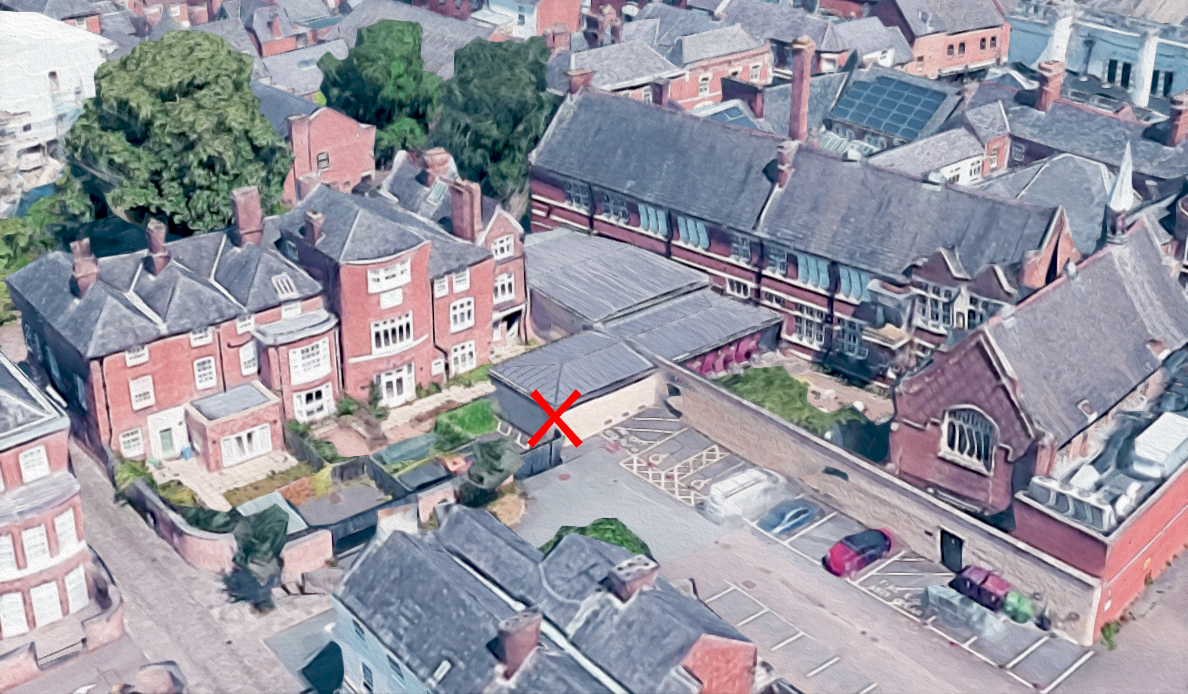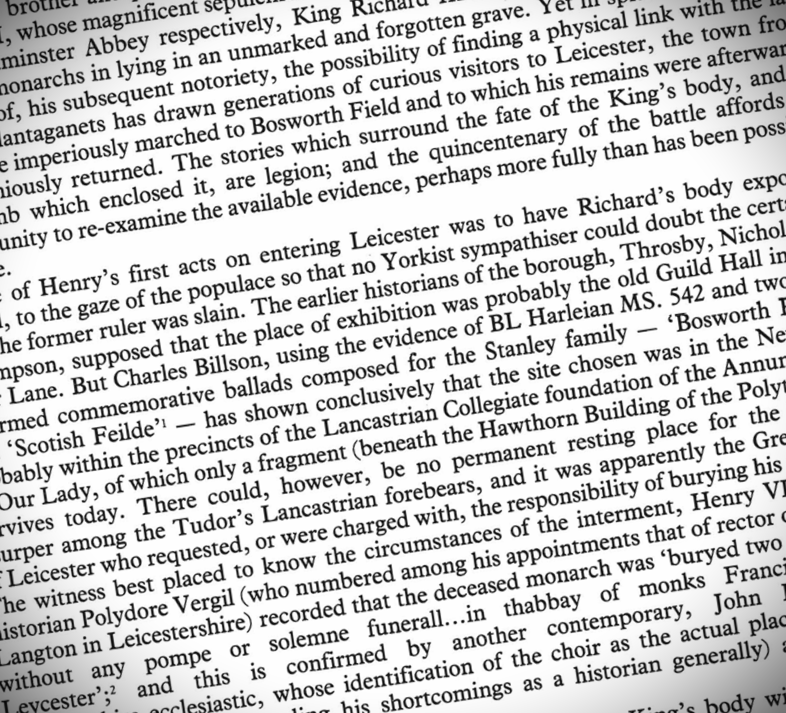Saturday 8 November 2025
King Richard’s Grave in Leicester: The LAHS connection
LAHS Vice President Robert Hartley recounts the Society's role in rediscovering the grave of King Richard III
On Halloween I opened my copy of The Guardian and found on the Opinion page a piece by Steve Coogan defending his new film, The Lost King, about Philippa Langley and the discovery of the remains of King Richard III. It seems the debate about who should take the credit for the find and its subsequent management will run and run.
I don’t intend to enter the current stage of the controversy, but it did occur to me that the Leicestershire Archaeological & Historical Society perhaps deserves to take a bit of credit for the discovery. I am thinking particularly of a short paper by David Baldwin, "King Richard's Grave in Leicester", which was published in the 1986 Transactions.1
The true story of the burial of the dead king had been obscured by two persistent legends. One concerned a stone coffin, said to be that of Richard III, which was used as a water trough for horses at an old inn in Leicester. The other was the story that after the Dissolution of the Monasteries by Henry VIII, the townspeople disinterred the king’s bones, paraded them through the streets of the town, and threw them into the River Soar at Bow Bridge. Both of these stories had become established in the early years of the 17th century, and came to be widely published as facts. In fact the story of the bones being thrown in the river was probably the main thing that most people thought they knew about the history of Leicester.
The stone coffin story Baldwin rightly dismissed, as coffins of this type were no longer being used by the 15th century. The story of the remains being dug up, more than half a century after Richard’s death, and thrown into the river, also seemed implausible. It is highly unlikely that Richard would still have been unpopular with anyone by the late 1530s.
Baldwin carefully reviewed all the documentary evidence, of which he found quite a lot. He painstakingly pieced the story together, showing how contemporary sources indicated that the King’s body was buried in the Franciscan Friary, and that in about 1495, Henry VII belatedly authorised the construction of a monument of Nottingham alabaster to be built over the grave. In the early 17th century Alderman Robert Herrick had a mansion house on the site of the Friary, and in the garden he had put up a monument marking what he then believed to be the site of King Richard’s grave.
Baldwin concluded that the King's remains must lie in the choir of the long-vanished Friary Church, "probably...beneath the northern (St. Martin's) end of Greyfriars Street, or the buildings that face it on either side". He went on to predict that it was possible that "at some time in the twenty-first century an excavator may yet reveal the slight remains of this famous monarch."

David Baldwin’s article (available online of course) is still well worth reading as well-argued piece of historical detective work. It also stands as a reminder of the huge amount of historical and archaeological discovery which has been published for the benefit of the community, by the LAHS, over the past century and a half,
In the late 1980s I was working at the Jewry Wall Museum in the centre of Leicester. As a member of the LAHS I had read David’s paper with great interest, and quite often at lunchtime, on my way to the "cob shop" or the Market, I would pause by the end of Greyfriars Street and wonder whether I would ever see this discovery made.
Given the systematic study of the archaeological potential of Leicester, which was being done by the Museums excavation team (later to become ULAS), and the inexorable progress of redevelopment of the city centre, it would have happened eventually, but without Philippa Langley probably not in my lifetime.
It is quite right to celebrate the achievement of Philippa Langley. Her passion and persistence led directly to the discovery of the mortal remains of King Richard III. Let us not, however, forget the others who researched and published and helped to lead her there.
After the discovery of the grave, David Baldwin also wrote two follow-up articles for the LAHS: 'Richard III: Back to the Future' (2013) and 'The Rediscovery of Richard III - A Personal View' (2015). The Society has also published an article on how the grave became lost to history in Leicestershire History magazine, the digital format of which is free for LAHS members.
Notes
1: Baldwin, D, 1986, “King Richard’s Grave in Leicester”, in Transactions of the Leicestershire Archaeological & Historical Society, Vol.60, pp21-24.
Background image: text from David Baldwin's 1986 article. Copyright LAHS
text from David Baldwin's 1986 article. Copyright LAHS


